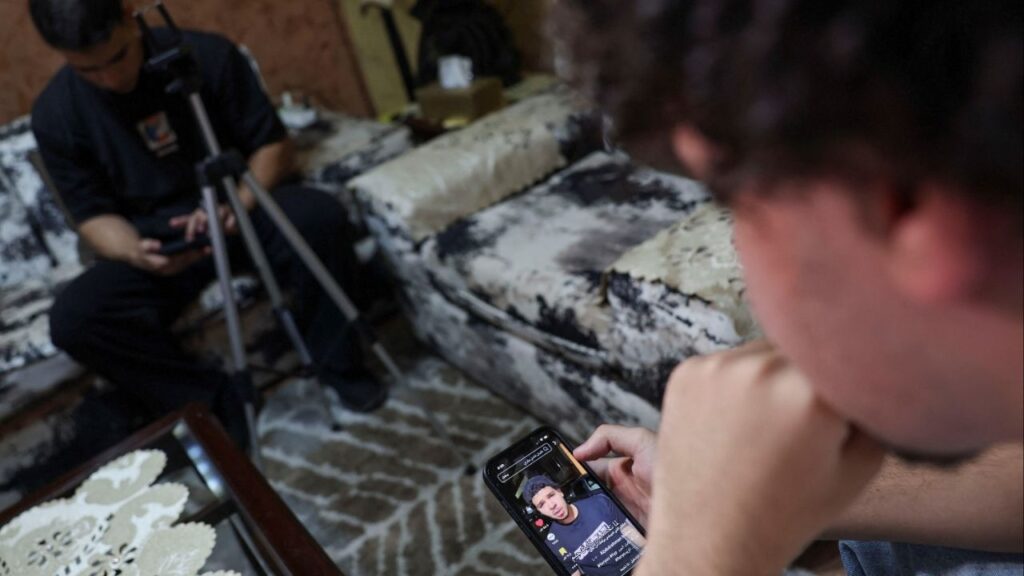Share
|
Getting your Trinity Audio player ready...
|
Amidst a wave of controversy over using chatbots in the classroom, real robots are now taking over. Curiosity Robotics has recently launched “Aico”— a friendly robot that uses Artificial Intelligence (AI) to help children learn English as a second language.
Aico is a small, white robot with a smiling face on its black screen, reminiscent of Eve from Pixar’s Wall-E. It’s programmed to teach English using dynamic activities including songs, games, and flashcards. While a teacher controls the device through a mobile app, Aico works to create an immersive learning environment for engaged preschoolers.
According to Curiosity Robots, an Israeli technology start-up, Aico aims to recreate the natural experience by which young children instinctively acquire language skills.
From birth, an infant’s brain grows and develops rapidly, along with its language-learning abilities. As toddlers, our brains are still capable of acquiring and mastering multiple languages simultaneously. Up until the age of 10, humans can master another language to a native-level proficiency, but a 2018 MIT study showed the same ability declines as children grow into teenagers.
An Israeli tech news website, No Camels, reports that Aico — named after a portmanteau of the Japanese words for love (“ai”) and child (“kodomo”) — was a success with children during a trial run at two kindergartens in Tel Aviv. There, Aico is used for short, daily interactive lessons that follow a teaching method developed by Helen Doron, a long-time educator and co-founder of Curiosity Robotics.
Yaron Bul, founder and chairman of Curiosity Robotics, explains that Aico has two main objectives: “(a) To assist caregivers or parents in teaching English to 1-5 year-olds, not depending on their training or language skills, or (b) Becoming a playful, personalized, and curiosity-based teacher to a toddler.”
Researchers recognize that the use of AI in English as a Second Language (ESL) teaching is inevitable and, as a result, have released a set of recommendations for developers. They argue that AI robots, like Aico, that teach preschoolers, should be safely introduced as a peer under the control of a knowledgeable adult.
What Exactly Is Artificial Intelligence?
Although AI has been around for a couple of years now, recent advances in the creative capacity of AI — in technology like ChatGPT, for example — recaptured public interest. Nowadays, the threat of AI seems to loom large on the horizon, but few really understand what AI is and how widespread it has become.
The Institute of Electrical and Electronics Engineers defines AI as “computer systems that are able to perform tasks which normally require human intelligence.” In short, AI technology is programmed to think and act like a human.
Because AI can learn, make decisions, and process language, this technology is already deeply embedded in our daily lives. Most businesses use or plan to use AI for customer service chatbots, and most smartphones recognize human speech using AI-powered assistants like Siri. AI is everywhere, from social media to automobiles and from healthcare to finance.
How Can AI Affect Education?
Curiosity Robotics’ helpful little robot is not AI’s first incursion into teaching. Most recently, the U.S. school system has been rocked by a different technological advancement: ChatGPT. This AI chatbot can generate complete essays, among other assignments.
Public school districts nationwide, including Alabama, Washington, California, New York, and the District of Columbia, have blocked ChatGPT from all school-issued devices. Educators and school officials argue that ChatGPT will impair students’ critical thinking and problem-solving skills.
Despite the bans, a Junior Achievement USA survey reveals 44% of high school students still plan to use AI to complete their schoolwork, even though 60% consider it cheating.
How Can Educators Work With, and Not Against, AI?
Artificial intelligence might be here to stay, but it doesn’t have to be the enemy. Governments worldwide are working to create guidelines on the ethical use of AI. In a 2023 report on the role of AI in education, the U.S. Department of Education emphasizes that the future of teaching with AI must start with keeping humans “in the loop.”
Noting that AI does not have the broad qualities of contextual judgment that humans do, the researchers insist that for all students’ educational success and preparation, people must retain responsibility for the health and safety of children, as well as for creating a more equitable and just society.
Similarly, the independent team behind UNESCO’s 2023 annual report on education warns that AI cannot replace teachers, but, in fact, teachers must assume and be entrusted with more responsibility than ever – not just for the classroom and tutoring, but to help society navigate this critical moment.
A recent survey by the Walton Family Foundation found that 51% of teachers admitted to using ChatGPT within the first two months of its introduction. Moreover, 38% of teachers are more likely to allow students to use ChatGPT than get caught without permission. So, how are teachers finding ways to embrace AI in the classroom?
- Test preparation. Some AI chatbots like Class Companion can help students prepare for tests by acting as a study companion for practicing answers.
- Research aid. Technology like ChatGPT can help students with brainstorming sessions by generating ideas to use as a starting point.
- Writing aid. Students can compare chatbot-generated texts against their own, rewriting sentences and learning how to improve as writers.
- Responsible AI use. Sometimes the best solution is to embrace the problem and teach students how to use AI as a productive tool, not as a crutch.
The Future of AI in Language Learning
After Aico successfully completes its pilot stage, Curiosity Robotics plans on taking the robotic helper to more schools across Israel and abroad. Undaunted by any current backlash to AI, the ambitious start-up is “committed to transforming early childhood education by leveraging advanced artificial intelligence technology.”
“We aim for the almost untapped market of the early age [education],” explained Bul, a company co-founder. “Hence, our clients are caregivers, as well as parents. From them, so far, … we have very good feedback.”
This article was produced and syndicated by Wealth of Geeks.
RELATED TOPICS:
Visalia Driver Arrested for DUI After Multiple Crashes and Pedestrian Injured
21 hours ago
Dollar Trades Lower With Fed Cut In View, On Course For Monthly Drop
21 hours ago
Visalia Semi Crash Injures Amazon Truck Driver After Red Light Collision
21 hours ago
Evacuation of Gaza City Would Be Unsafe and Unfeasible, Says Head of Red Cross
21 hours ago
Most Trump Tariffs Are Not Legal, US Appeals Court Rules
22 hours ago
New $250 Visa Fee Risks Deepening US Travel Slump
22 hours ago
Prime Minister of Yemen’s Houthi Government Killed in Israeli Strike
22 hours ago
California Schools Reverse Truancy Trends. Improving Reading Scores Could Be Next
22 hours ago

Judge Blocks Pillar of Trump’s Mass Deportation Campaign

Visalia Driver Arrested for DUI After Multiple Crashes and Pedestrian Injured

Dollar Trades Lower With Fed Cut In View, On Course For Monthly Drop

Visalia Semi Crash Injures Amazon Truck Driver After Red Light Collision

Evacuation of Gaza City Would Be Unsafe and Unfeasible, Says Head of Red Cross












